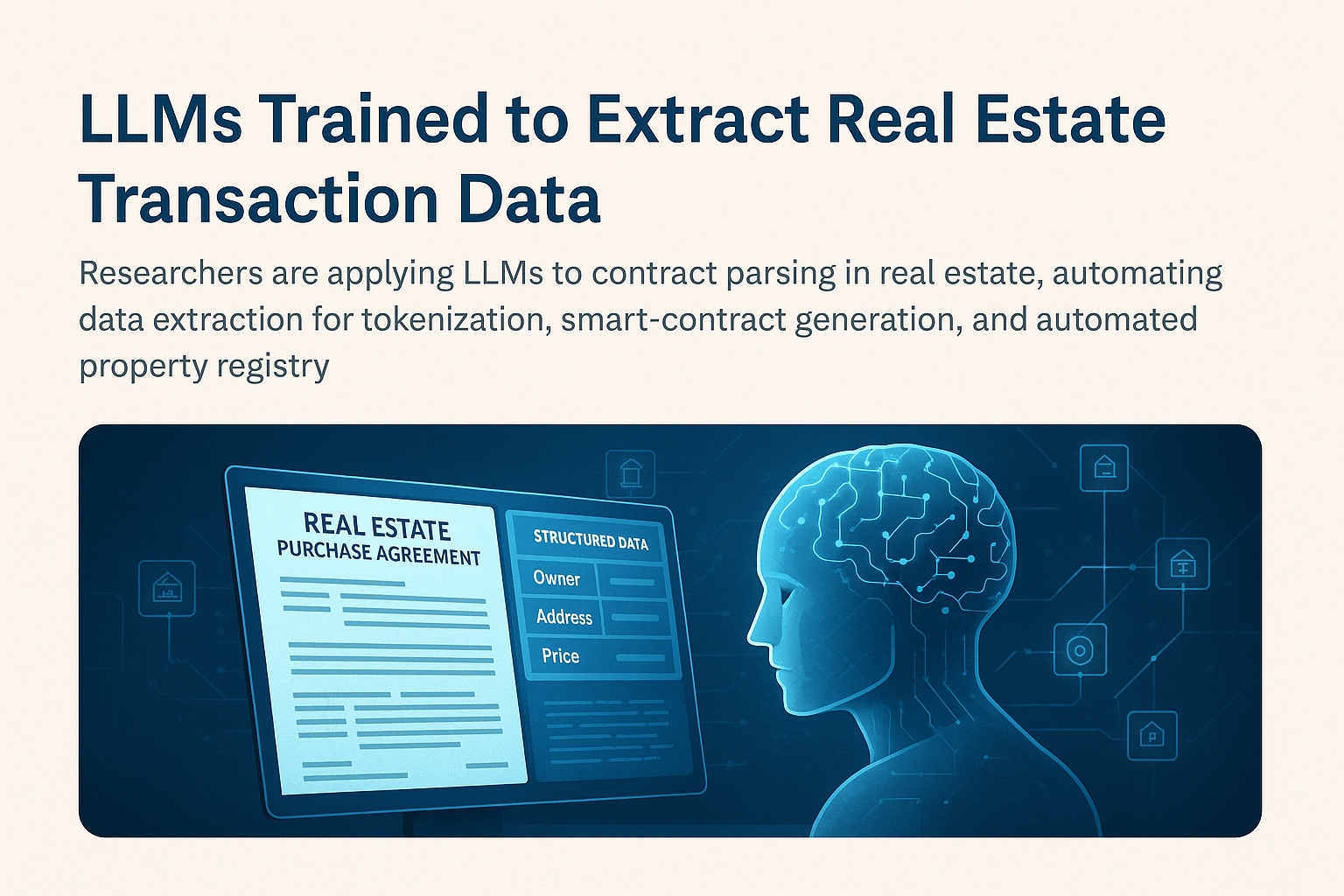In an industry historically burdened by paperwork, legal complexity, and fragmented data systems, the real estate sector is undergoing a transformative shift. Researchers and startups alike are now applying large language models (LLMs) to the task of parsing real estate contracts, automating data extraction for smarter, faster, and more transparent property transactions.
The implications of this are vast. Property contracts—ranging from purchase agreements to leases and title deeds—have traditionally required manual review by lawyers and clerks. This slows down transaction times, introduces human error, and contributes to the opaque nature of real estate markets. But with LLMs now trained specifically to understand legal and transactional real estate language, this bottleneck is being dismantled.
From PDFs to Smart Contracts: Automating the Data Pipeline
One of the most promising applications of LLM-based contract parsing is data extraction for tokenization. Tokenization allows properties or property rights to be represented on a blockchain as digital assets, making them easily tradable or fractionalized. To tokenize a property, however, clean and structured data must be extracted from legal documents—something LLMs can now do with growing accuracy.
This extracted data also serves as the basis for smart contract generation. Imagine a lease agreement automatically generating a corresponding Ethereum-based smart contract that handles rent payments, deposit terms, and penalties—without a single human involved in the drafting phase. With fine-tuned LLMs, this is not a futuristic dream but an emerging reality.
Automated Registries: The Birth of Autonomous Land Records
Beyond tokenization and smart contracts, perhaps the most revolutionary impact lies in automated property registries. LLMs trained on national and local property registry norms can extract metadata (owner names, parcel numbers, encumbrances, etc.) directly from transactional documents and push that information into a blockchain-based registry. This creates a tamper-proof, real-time ledger of property ownership that is vastly more efficient and secure than traditional methods.
Governments in Latin America, Africa, and parts of Southeast Asia—where land records are often incomplete or disputed—are already experimenting with this technology to bring transparency and trust to rural land transactions.
Challenges and the Road Ahead
Of course, applying LLMs in such a high-stakes domain isn’t without challenges. Model hallucinations, data privacy concerns, and legal jurisdictional nuances still pose risks. However, researchers are developing domain-specific fine-tuning strategies, using labeled real estate corpora to dramatically improve accuracy and reliability.
As this field matures, we may see entire real estate ecosystems emerge where:
-
Buyers interact with AI-powered legal bots,
-
Sellers tokenize properties with a few clicks,
-
Government registries update autonomously via blockchain,
-
And every transaction is verifiable, secure, and near-instantaneous.
By teaching LLMs to “read” the language of real estate, we are setting the stage for a more liquid, accessible, and fair global property market. Legal tech and proptech are merging into a single frontier—and the consequences could echo far beyond real estate into how we think about ownership, identity, and trust in the digital age.




